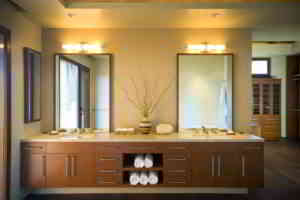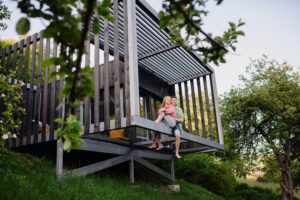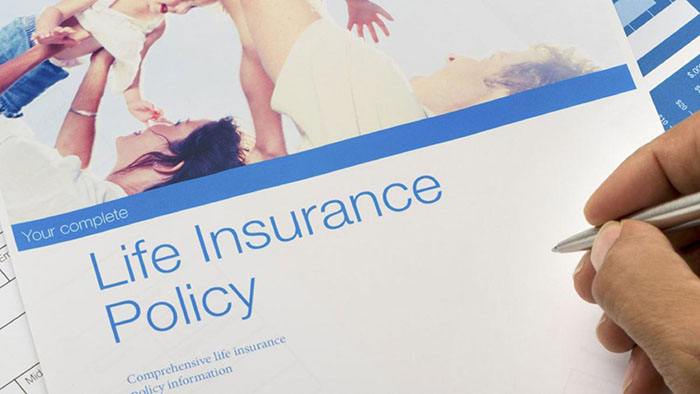Owning a home remains a huge part of the American Dream, and people with modest or even severe disabilities share the dream of home ownership, despite the additional challenges with mobility or living independently their disabilities may bring about.
Rising home prices and interest rates and supply shortages have made homeownership more challenging in recent years, and people with disabilities face additional hurdles to creating functional spaces that are essential to their quality of living.
Learn more about the many different resources available to help people with disabilities make the modifications necessary to create safe and accessible spaces throughout their homes and compare options to find the best home improvement loans for many different situations.
Why a Personal Loan for Home Modifications?
Personal loans can be a great way to fund large purchases, renovate a home, or consolidate debt. More than 20 million Americans had taken out personal loans in the first quarter of this year, while balances for both unsecured and secured personal loans exceeded $436 billion in 2021.
Personal loans also can be a great way to make home improvements for people with disabilities. Here are a few of the main reasons why consumers take out personal loans.
Pay off high-interest debt
Credit cards often have interest rates upwards of 20%. Creditworthy borrowers, however, can take out personal loans for interest rates that often are lower than 10%. Swapping debt by consolidating your debt won’t reduce your overall debt load, but it can save you thousands of dollars in interest payments, as well as help you pay off your debt faster.
Debt consolidation
Personal loans are a great way to consolidate your various debt obligations into a single payment. You won’t have to worry about multiple due dates or the possibility of missed payments, and as noted above, you could even save money if you are eliminating high-interest credit card debt for the best debt consolidation personal loan with a favorable interest rate.
Remodel your home
Many homeowners turn to home equity lines of credit to fund major home renovation projects. A personal loan is another option to make necessary home modifications for people with disabilities without tapping into the equity in your home by refinancing or taking out a second mortgage with a HELOC.
Fund important purchases
Increasing accessibility for people with disabilities can take many forms. Mobility and accessibility improvements could be small things, such as adding a wheelchair ramp over the front steps or replacing carpet with hardwood flooring or tile to make it easier to get around. Or it could be even simpler, like adding more lighting to make it easier to see. The funds from a personal loan can provide much-needed capital to make these purchases and pay for their installation.
You’ve already taken out a second mortgage
A personal loan is one option to consider if you already have taken out a home equity loan or a HELOC and need to make additional accessibility improvements to your home.
Most personal loans are unsecured, meaning they aren’t backed by physical collateral like your home mortgage or auto loan.
Another benefit of a personal loan is that you can use the funds however you want – there usually aren’t any spending stipulations once the loan is funded.
It’s important to know your credit score before you begin shopping for a personal loan.
Consumers with good FICO credit scores – 670 to 739 – will typically get superior personal loan offers than consumers with fair (580-669) or poor (sub-580) credit, though personal loans are available to borrowers with bad credit.
Compare Personal Loans and Find the Best One for Your Needs
Home Modifications to Accommodate Physical Disabilities
People with physical disabilities can struggle with mobility in the home. Challenges may range from navigating entryway or second-level stairs to getting in and out of the shower to low toilets in the bathrooms. Here’s a list of 10 home modifications for people with physical disabilities that can help them be more independent and help increase mobility in their homes.
Cover entryway stairs with access ramps
Wheelchair or access ramps remove the difficulty of navigating entryway stairs, as well as cut down the chance of slip or fall injuries.
Average cost: $1,000 to $2,800
Swap out interior knobs for levers on all doors
Levers can be much more friendly for seniors and people with physical disabilities than knobs. Levers also tend to offer increased visual appeal over door knobs.
Average hardware cost: $20 to $40
Average installation cost: Varies. A skilled handyman should be able to swap out interior door hardware in about 20 minutes or less. A licensed contractor likely will charge substantially more than a general handyman.
Install two-way light switches
Light switch placement can be crucial for people with physical disabilities. Two-way switches allow homeowners to turn lights on or off from either end of a room.
Average cost: $100-$200
Install pull-out shelves
Ease of access greatly increases the functionality of kitchen and bathroom cabinets.
Pull-out shelving, also called glide or slide shelving, moves forward on rails and lets you easily reach items at the back of the shelf.
Average cost: $100 to $120 per shelf for the most durable shelf hardware
Install handrails/grab bars in showers or tubs
Handrails can alleviate the trepidation of stepping over the side of the tub or shower curb.
Grab bars also can be installed inside the shower to help people with limited mobility issues feel more secure while washing.
Average cost: $85 to $300
Smoother flooring
High-pile carpets can be a poor option for people who rely on wheelchairs or power chairs to get around their homes.
Replacing carpet for smoother flooring such as hardwood or tile can be expensive, but it takes far less effort to move across these surfaces than carpet.
Average cost: Flooring prices depend on the choice of materials, size of the room, and contractor labor rates, but expect to pay between $6 and $12 per square foot, and more than that if you choose premium flooring materials.
Install additional lighting
Brightly lit rooms can help people with mobility issues better navigate around the home.
Better lighting can come by upgrading to bright-white LED bulbs, or by installing additional can, recessed, or track lighting depending on your preference.
Average cost: $10-$12 per LED bulb, or $300 per new light fixture.
Install a stair lift
While this is definitely a big-ticket purchase, it can be the only way for people with moderate to severe mobility issues to access the upper levels of a second-story home.
Average cost: $6,000
Remove throw rugs
It’s natural to place throw rugs on smooth-surface flooring such as hardwood and tile, but they can impede mobility. Removing runner rugs in hallways and throw rugs in other living spaces is a simple home improvement for people with disabilities.
Average cost: $0
Smart home tech
Home automation such as smart lighting systems, thermostats, televisions, and automated pet feeders that can be controlled from a smartphone greatly reduce the need to move about the home on a daily basis.
Average cost: $800
These are our top-10 suggestions. Your personal needs may dictate other home modifications, such as larger hallways, wider doorways, or any number of improvements or renovations that allow you to move about with greater freedom and flexibility. Taking out a personal loan can help homeowners fund these improvements.
Home Modifications to Help People With Neurodivergent Issues Live Better
Modifications for the home to help people with neurodivergent issues are much different than those who are challenged by mobility problems.
Here are five home modifications that can help people with neurodivergent issues, such as autism, Down or Williams syndrome, social anxiety or sensory processing disorders better enjoy their living spaces.
Increasing space
People with neurodivergent issues may benefit from living in more spacious surroundings rather than a small apartment. Buying a larger home may not be feasible, but a larger apartment with an extra bedroom can help other family members enjoy some distance, provide boundaries, and increase serenity throughout the home.
Average cost: Varies. Adding a room to an existing home, however, can cost around $50,000.
Repainting
Colors communicate a range of feelings or emotions – blue symbolizes authority for instance. Walls should be painted in light and soothing neutral colors to reduce unnecessary stimulation. Color options include soft shades of white, beige and lighter grays.
Average cost: $2 to $6 per square foot.
Rhythm and proportion
Spaces for people with neurodivergent issues should be designed and decorated with uniform and common elements from top to bottom and in proper proportion to each other. These small changes can help create a greater sense of balance and order in a room and reduce unnecessary stimulation.
Average cost: Varies
Lighting
Bright light has been shown to intensify feelings and emotions. Installing dimming light switches can be a simple but effective way to change the intensity of a room and help manage the feelings or emotions of neurodivergent children and adults.
Average cost: $150
Soundproofing
Quiet spaces are crucial for people with auditory sensitivity issues. Sound dampening measures can include low-cost measures such as installing weatherstripping and noise-blocking sweeps on interior doors or adding acoustic foam to interior spaces.
Average cost: $1900 for professional soundproofing work. An acoustic door seal kit can run about $25, while a sweep for the bottom of the door could run upwards of $100 for quality materials.
This list is just a set of suggestions. We realize that home modifications for adults or children with neurodivergent issues are specific to each individual.
Where to Get Help for Home Modifications for People With Disabilities
Making the home improvements for people with disabilities that are listed above can be costly.
Here are five resources you can pursue that can help you make home modifications for people with disabilities that you won’t have to pay back.
Rural Housing Repair Loans and Grants
This federal program provides grants or low-interest loans for homeowners to implement many of the changes we’ve covered above. Loans can be for up to $20,000, with terms up to 20 years at 1 percent interest. Grants, meanwhile, are limited to homeowners ages 62 and older. Income restrictions apply.
This non-profit headquartered in Washington, D.C. helps people affected by disasters as well as people with disabilities repair and rehabilitate their homes. Income determines eligibility.
USDA Rural Development Single Family Housing Repair Grants
These grants and loans are also known as the Section 504 Home Repair program. Grants are up to $10,000 and must be used to remove health and safety hazards in qualifying residences.
Modest Needs Self-Sufficiency Grants
This non-profit provides financial assistance to a range of people who typically don’t qualify for low-income social assistance programs.
Indian Affairs Housing Improvement Program
This grant program of up to $60,000 is administered by the Bureau of Indian Affairs and can be used to modify or renovate homes.
Help for Veterans for Home Modifications
In addition to the grant programs listed above, there are additional resources available for service and family members who need to make home modifications for veterans.
Disabled Veteran Housing Assistance
The Department of Veterans Affairs offers Specially Adapted Housing and Special Housing Adaptation grants to eligible veterans that can be used to build an adaptive home, build wheelchair ramps, or widen doors to increase accessibility.
Home Improvements and Structural Alterations Grant
This grant can be used to make structural changes and medically necessary improvements in the residences of qualifying veterans.
Veterans with service-related disabilities may be entitled to a tax-free monthly benefit that can help pay for home modifications.
These are just a few of the many resources available to help disabled veterans. Advocacy groups such as Veterans United and Disabled Veterans National Foundation also have grant programs in place.
Frequently Asked Questions (FAQs)
Here are some commonly asked questions about personal loans.
If I take out a personal loan, what can I use the money for?
Once funded, your personal loan money can be used for anything you want. Depending on the amount you borrowed, you could tick off many of the items on our home modifications for people with disabilities lists.
How much money can I borrow with a personal loan?
Loan limits vary by lender and by the creditworthiness of the borrower. However, generally speaking, you can take out a personal loan for amounts ranging from $3,000 to $50,000.
How do I qualify for a personal loan?
Lenders consider a number of factors, including existing debt and work history. Your credit score is of utmost importance, however, to secure the most favorable loan terms.












